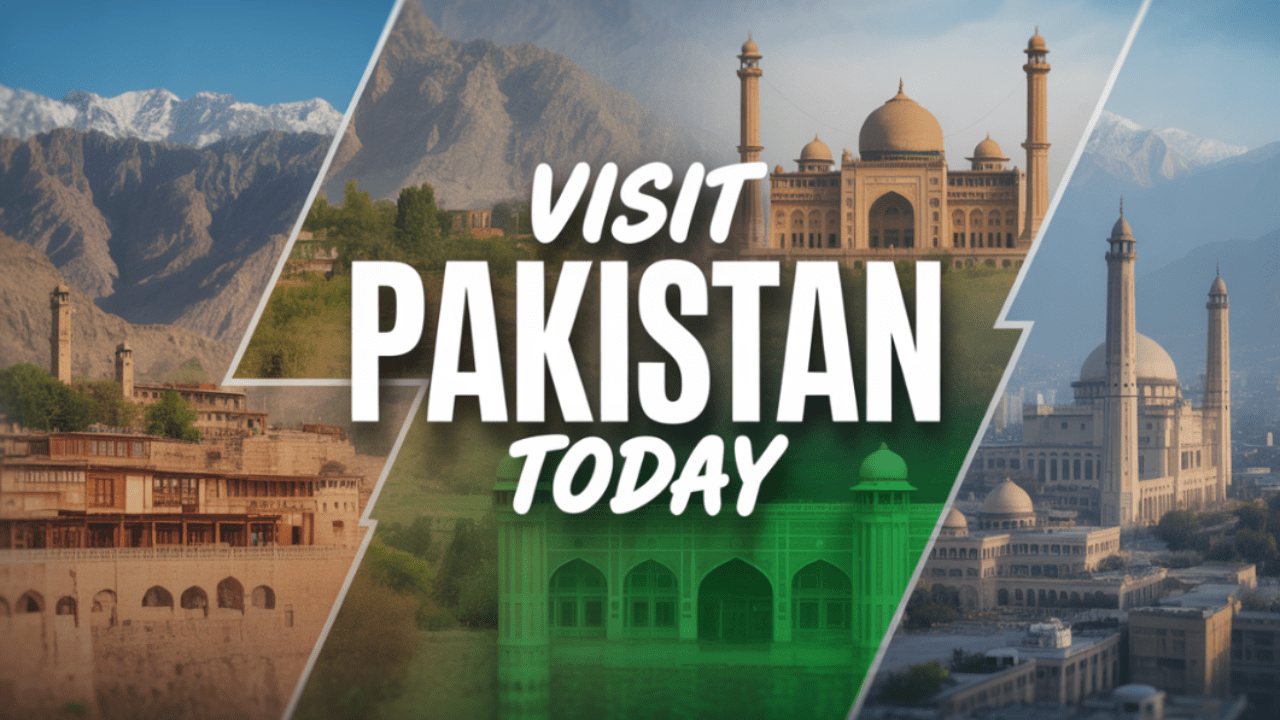International Tourism Information about Pakistan
Pakistan has emerged as one of the most sought-after places for foreign tourists. Its stunning mountains, rich cultural heritage, and hospitable people have been taking the country steadily higher up the global tourism ladder. Whether you are a trekker seeking an adventure, a culture vulture waiting to absorb history, or an experiential traveler seeking real experiences, Pakistan has something distinct in store for you.
In this travel guide, we’ll discuss all you should know regarding international travel to Pakistan, from visa rules and safety precautions to the best places to visit and travel essentials.
Visa and Entry Requirements for International Travelers
Preparation of your trip starts with knowing Pakistan’s visa policy. The government has initiated an online visa regime (e-visa) to simplify tourism. More than 175 nationalities can apply online, and tourists from about 50 countries are eligible for visa-on-arrival.
Requirements are:
- Valid passport (at least six months validity).
- Updated passport photographs.
- Documentation of accommodation or an invitation letter (for staying with locals).
- Return ticket or proof of onward travel.
The tourist visa typically remains valid up to 90 days, with the possibility of extension. For group tours, registered tour operators can even facilitate international visitors through the process.
Best Time to Visit Pakistan for Tourism
Depending on the area you want to visit, the best time for international travel in Pakistan varies.
- Spring (March–May): Best for traveling around Islamabad, Lahore, and the Hunza Valley with flowers in bloom.
- Summer (June–August): Ideal for mountain trekking in Gilgit-Baltistan, Swat, or Skardu.
- Autumn (September–November): It is a tourist’s delight, with flower-filled valleys and gentle weather.
- Winter (December–February): Ideal for skiing and snow sports in Malam Jabba, Naltar, and Murree.
Each season provides a unique travel experience, thereby making Pakistan an all-year-round destination for tourism.
Popular Destinations for International Tourism in Pakistan
Pakistan’s diversity is mirrored in its travel sites. From urban cities to hidden valleys, foreign visitors will have endless sites to visit.
- Islamabad: The new capital famous for Faisal Mosque, Pakistan Monument, and picturesque hiking trails.
- Lahore: A cultural center with sites such as Lahore Fort, Badshahi Mosque, and bustling food streets.
- Karachi: Pakistan’s biggest city, renowned for Clifton Beach, Quaid-e-Azam’s Mausoleum, and a vibrant nightlife.
- Hunza Valley: International travelers’ heaven, with peaceful scenery and hospitable people.
- Skardu: Entrance to K2, one of the greatest mountains in the world, glaciers, and alpine lakes like Shangrila and Satpara.
- Fairy Meadows: One of the world’s most lovely locations, a paradise for trekking fans.
- Multan: The city of saints, with a rich heritage and Sufi shrines.
Travel Safety and Tips for International Travelers
Safety is often a top concern for travelers. Pakistan has improved security significantly, and most tourism areas are safe for international visitors. However, basic precautions are recommended:
- Register with your embassy when traveling long-term.
- Travel with a local guide in remote regions like Gilgit-Baltistan or Chitral.
- Dress modestly to respect local culture, especially in rural areas.
- Stay connected with a local SIM card for navigation and emergencies.
- Check travel advisories before traveling to border zones.
Overseas visitors commonly compliment the hospitality of Pakistan, saying that inhabitants go out of their way to make visitors comfortable.
Transportation and Travel Essentials
Knowing how transportation works facilitates international travel.
- Flights: International airports are located in Islamabad, Lahore, and Karachi, with direct flights from the Middle East, Europe, and Asia.
- Trains: Pakistan Railways links most cities. Comfortable services like Green Line Express are for long-distance travelers.
- Road Travel: Buses, private vehicles, and ride-hailing services (Careem, Uber) are prevalent in cities.
- Domestic Flights: For northern destinations, PIA and private carriers connect Skardu, Gilgit, and Chitral with main cities.
Necessities for International Touring in Pakistan:
- Light clothing for cities and warm outerwear for mountain areas.
- Power bank and universal travel adapter.
- Local currency (Pakistani Rupee), even though cards are accepted in major cities.
- Travel insurance for trekking or adventure tourism.
The Future of International Tourism in Pakistan
With better infrastructure, new roads, and growing international promotion, Pakistan is becoming a leading destination for travel. International tourism promotions showcase its mountains, deserts, historical sites, and cultural heritage. The government has also entered into agreements with tour operators in order to facilitate travel for foreign tourists.
Blogging travelers and social media influencers have been key drivers of shifting attitudes worldwide. Most tell Pakistan to be one of the globe’s most underrated places, where visitors can get real for a fraction of the price of mainstream tourist hotspots.
Conclusion
Pakistan is no longer a secret jewel; it is an emerging destination for global travelers and tourism. From the lofty Himalayas to the ancient Indus Valley sites, the nation presents boundless possibilities for discovery. With enhanced travel regulations, developing infrastructure, and unparalleled hospitality, international travel to Pakistan continues to become more accessible and rewarding with each passing year.
Whether you are an adventure traveler, a history lover, or someone searching for authentic cultural tourism, Pakistan promises memories that will last a lifetime.
You can travel to Pakistan or you can read more blogs so visit mmtravelspk.com!


